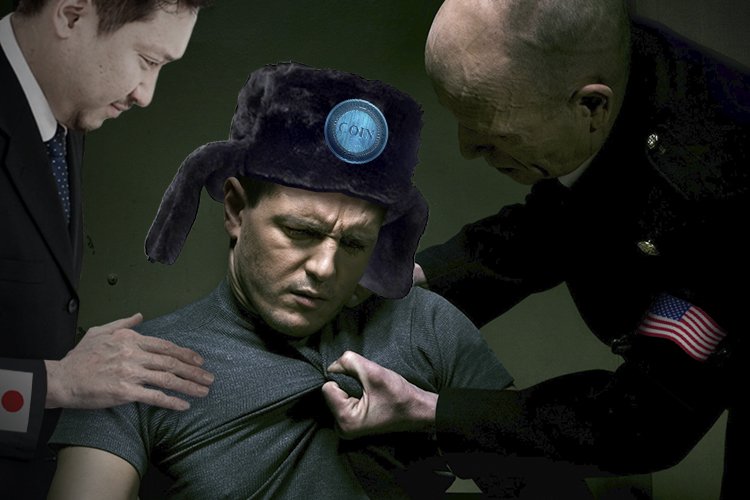Americans Can Lose $3 Bln in Dubious ICOs. FinCEN Has Drowned In Delations

The Financial Crimes Enforcement Network of the USA (FinCEN) receives 1,500 suspicious transaction reports on the cryptocurrency market monthly. The director of the branch Kenneth BLANCO announced the data at the forum “Chicago-Kent BL Block (Legal) Tech”. Isn’t it too much, even for the size of the United States?
The regulator got the overwhelming majority of the information within the SAR (Suspicious Activity Report) program – the mandatory notification of the financial intelligence about unusual financial transactions.
SAR’s requirements are simple at the first sight. Every transaction can seem suspicious if it exceeds $5000 for the emitents and $2000 for usual private customers and legal bodies. At the same time: the customer uses a fake identifier (ID), two customers use the same ID, he changes the transaction after the demand to show the ID, performs several transactions for amounts slightly less than acceptable, tries to avoid the requirements of the law on bank secrecy, and so on.
At the same time, the regulator receives information not only from usual financial companies but also from crypto exchanges.
"These messages include both bank and crypto exchanges orders. Many of them turned out to be extremely important for law enforcement agencies," - says Kenneth BLANCO. "The information in the reports included data on beneficial ownership, additional activities related to stock exchanges that we had not previously known, and jurisdictional information".
Moreover, the legal basis of the inspection is the FinCEN 2011 rule released for the fiat money.
According to American instructions, more than 70% of transactions conducted in the virtual market can be considered suspicious. Firstly, anonymous transactions automatically fall within the SAR. They do not use ID at all, and this is already a formal reason for contacting the competent authorities. Secondly, the problem is in the assessment of the value of transactions. The price of crypto assets can vary not by cents, like fiat, but by hundreds of dollars within a day. Accordingly, a critical financial threshold can be passed in a very short time regardless of the will of the transaction parties, which, of course, does not make it illegal.
It is quite possible that a huge number of appeals is just a consequence of the bureaucratic formalism. However, this does not solve the problem in general. According to the US Federal Trade Commission (FTC), during just two months of 2018, US citizens lost $ 532 million in illegal operations in the ICO market. At the same time, according to pessimistic forecasts, this figure could grow to $ 3 billion by the end of the year.
For example, at the end of last year, the US authorities initiated a criminal case against Russian immigrant Maxim Zaslavsky, the owner of the Diamond Reserve Club World (DRC World) and the REcoin Group Foundation. The businessman held two ICOs, during which funds and tokens secured by real estate and diamonds should have appeared in the virtual market. Investors did not see any tokens or diamonds, although they managed to invest over $ 300,000 in Zaslavsky's business. The SEC has noticed a potential scam, and now the businessman faces a serious prison term and a fine.
Disturbing, but also encouraging messages come from another part of the world. The National Police Agency (NPA) of Japan spent 35 million yen ($ 315,000) last year on the development of the software to capture scams in the crypto market. Under the technical enquiry, the software should track the blockchain and identify suspicious movement of funds. Japanese colleagues of American security forces are also concerned about the ever-increasing number of illegal transactions with virtual assets. Since June 18, regulators of the Land of the Rising Sun have banned even the turnover of anonymous cryptocurrency. That resulted in the withdrawal of several popular tokens from the market.
It has not been reported yet what results Japanese specialists have achieved. However, the trend is evident. Law enforcement agencies seem to have poured themselves into the virtual market. Everything new, and cryptocurrencies are not an exception, is extremely irritating for the bureaucratic apparatus. Moreover, even if the representatives of the new economy do not do anything that could harm consumers, their actions are still under suspicion. However, this trend has a positive side too. The increased attention of the security services and regulators to this sphere of the economy is a step towards the creation of the unified regulatory system, which so many businessmen are talking about. What it will be like is the subject of discussion and political bargaining. The main thing is there is a counter movement.
It will be recalled that the beginning month will, in many ways, determine the virtual market. On September 7, the meeting of the European Union Ministers of Finance on the regulation of cryptocurrencies will take place; on September 11, hearings in the Supreme Court of India on the legality of the turnover of virtual assets are to take place; on September 21, the SEC of the USA will consider the issue of the admissibility of the presence of crypto assets on the financial market.